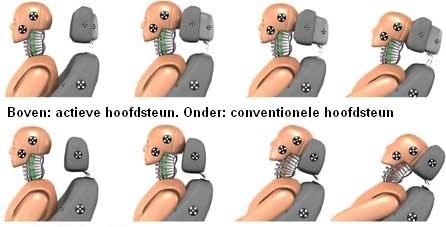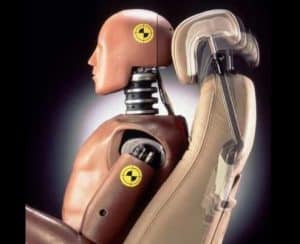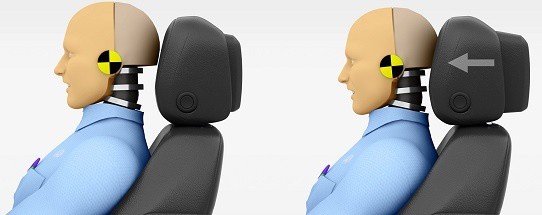Subjects:
- Preface
- Mechanical active headrest
- Electric active headrest
Preface:
In a rear-end collision, one is pressed into the seat and the head moves in relation to the upper body with a very fast movement backwards and forwards. The strain of the neck muscles can lead to permanent injury; a whiplash. In such a collision, the active headrest provides protection by moving forward. The occupant's head is cushioned, so that the neck does not make too much movement.
The following image shows the situation with an active headrest (top) and without active headrest (bottom).

Mechanical active headrest:
A seat with a mechanically active headrest has a pressure plate that is pressed backwards by the body weight. A lever mechanism moves the headrest upwards and forwards. The movement of the headrest catches the person's head and slows down the movement.
Immediately after the collision, the pressure plate and headrest automatically return to their original position.

Electric active headrest:
With this system, the moving mechanism is only incorporated in the headrest. The headrest consists of two elements that are pushed apart by an electromagnetic actuator during a collision. The airbag control unit controls the actuator. After actuation, springs between the two elements push the pillow towards the head and neck of the person. The headrest itself does not move during a collision. After activation, the headrest can often be reset with special tools and diagnostic equipment. In other cases it is necessary to replace the actuator.

Related pages:
